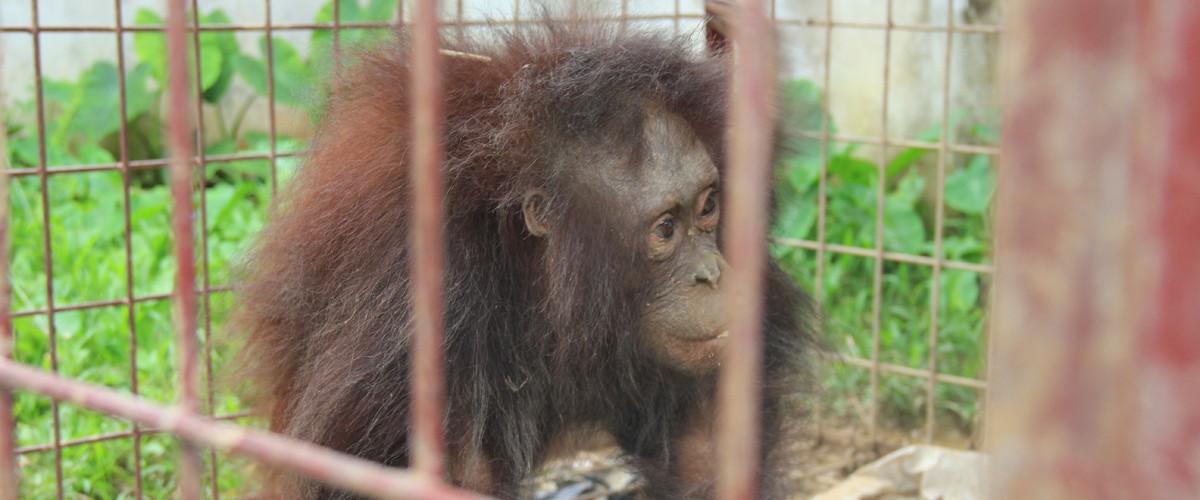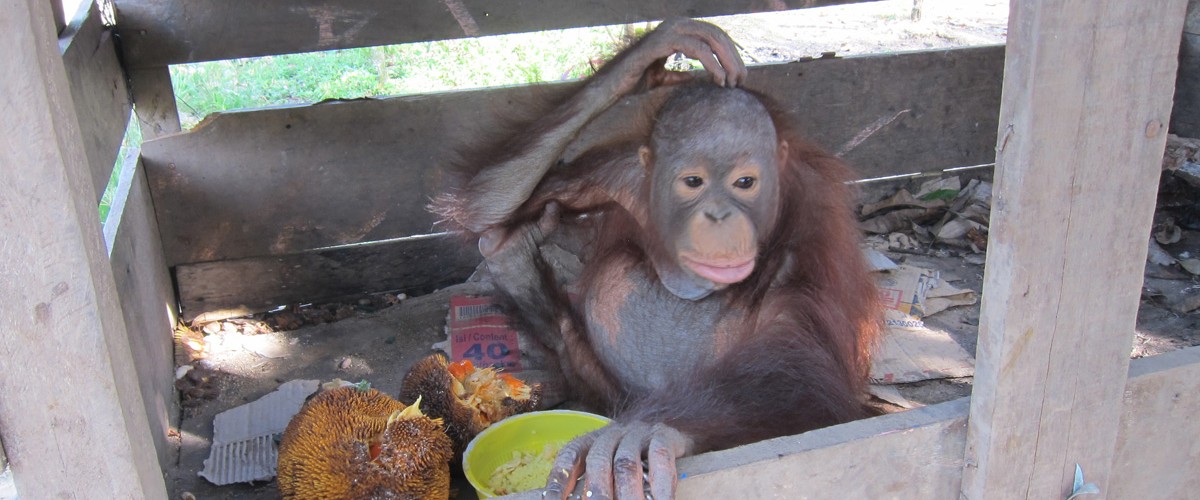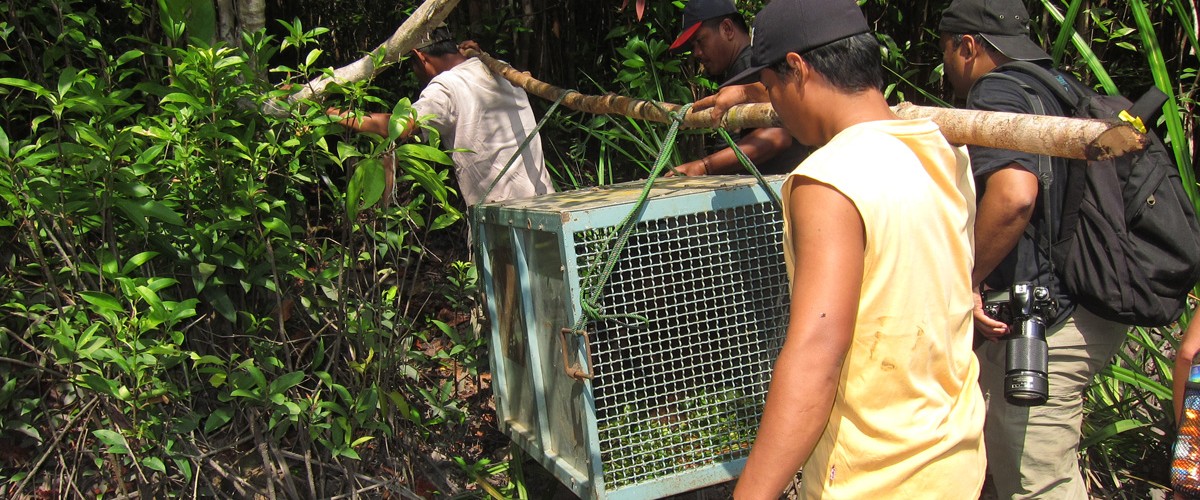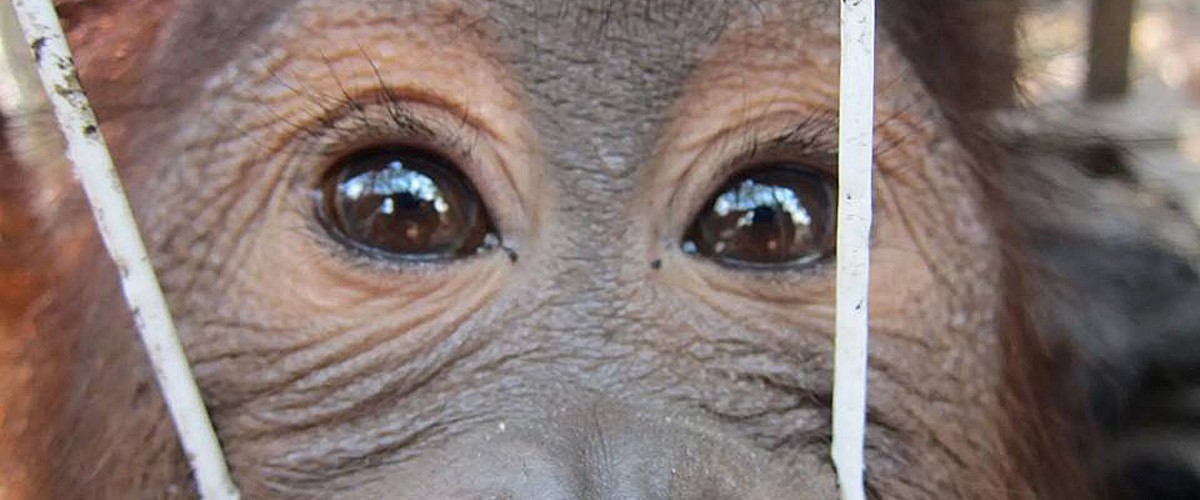By Edi Rahman, Field Director
The land within the Ketapang and Kayong Utara Regencies is mostly made up of peat swamp. This is a comfortable habitat for orangutans and other wildlife to live. However, many people in the region are not aware of the importance of orangutans and their habitat. Orangutans continue to be disturbed by human expansion, and are continuously being hunted, traded, and kept as pets. Additionally, their habitat continues to be disturbed by human activities such as logging and mining, and the clearance of forests for large-scale plantations.
As a result, GPOCP (known as Yayasan Palung in Indonesia) created our Wildlife Crime and Investigations program. We carry out investigative activities in the field, and work with the local Environmental Agency (BKSDA) to rescue and relocate animals. We also promote the conservation of habitats through our Customary Forest, Environmental Education and Sustainable Livelihoods programs.
In 2002, I started working at GPOCP as an Animal Protection Investigator. I worked in the field to collect data and information on crimes against orangutans, like hunting and trafficking, in the Ketapang and Kayong Utara Regencies. During my first year at GPOCP there were many cases of crime against individual orangutans. Interestingly, there was not one type of person who was more likely to participate in these illegal activities. Both wealthy and less advantaged people, and educated and undereducated people all partook. In fact, it was quite surprising that from 2002 – 2008 there were many cases of orangutans being kept as pets that took place in the city center of the Ketapang Regency, especially in Delta Pawan District and Benua Kayong District. Even though it is known that the two sub-districts are not forested and are not good habitat for orangutans, there were many cases of orangutans as pets. This fact reinforces that, during those years, the orangutan trade was rampant because all the orangutans found from our investigations came from the vicinity of the Ketapang Regency, outside of the naturally forested areas.

What is even more sad is that when orangutans are kept as pets, they are treated unfairly and they are deprived of the freedom they deserve. Orangutans are kept in cages and most of them are always tied up in iron chains. Orangutans are given unnatural food and drink such as rice, noodles, and coffee. In the wild, they only eat fruits and other plant matter. In order to save individual orangutans and provide awareness to the community during these years, law enforcement presence was intensified. Orangutan confiscations were carried out by the West Kalimantan Natural Resources Conservation Agency (BKSDA). This helped to decrease the number of cases of orangutans kept as pets, and increased public awareness.
At this time, the orangutans that were rescued by law enforcement temporarily stayed in various animal transit cages and received treatment before being sent to a rehabilitation center in Central Kalimantan. GPOCP managed this process in collaboration with BKSDA from 2002 – 2009. Beginning in 2009, this process was taken over by International Animal Rescue (IAR), also based in Ketapang.

During this period, in addition to the high number of orangutan trafficking cases, illegal logging activities were also rampant. The Ketapang and Kayong Utara regencies were a hotspot for logging, causing a detrimental effect on important orangutan habitat. In fact, these areas are the biggest contributors to illegal timber in all of West Kalimantan. Recent decreases in illegal logging activities occurred after the “Wanalaga 1” and “Wanalaga 2” operations, carried out by the Indonesian National Police and the Indonesian Ministry of Forestry in March 2008.
Between 2004 and 2019, GPOCP uncovered 182 cases of crimes against orangutans – 148 cases of orangutans being trafficked, and 34 cases of orangutan conflict in villages. Most of the cases of orangutans being kept as pets occurred between 2004 and 2009, while most cases of human-orangutan conflict took place from 2015-2019.

In 2008, the trend of illegal logging activity began to decline, however, large-scale oil palm plantations and mining began to increase in frequency. People supported these efforts, since they helped to create jobs and advance the regional economy. Large-scale clearing of forest areas began, despite the knowledge that these areas were important habitat for orangutans and other wildlife. Orangutans continued to be displaced from their habitat.
Such rampant land clearing directly results in the decline of orangutan habitat. With the decrease of habitat also comes the reduction of available foods for orangutans to eat. Eventually, this leads to frequent conflicts between orangutans and oil palm plantations, mining, and community gardens. When conflicts occur, it is always the orangutans that end up being harmed, killed or captured. I’m proud to say that between 2008 and now, many orangutans have been successfully rescued from oil palm and mining concessions, and were subsequently translocated to forests that are more suitable for orangutans to live in.
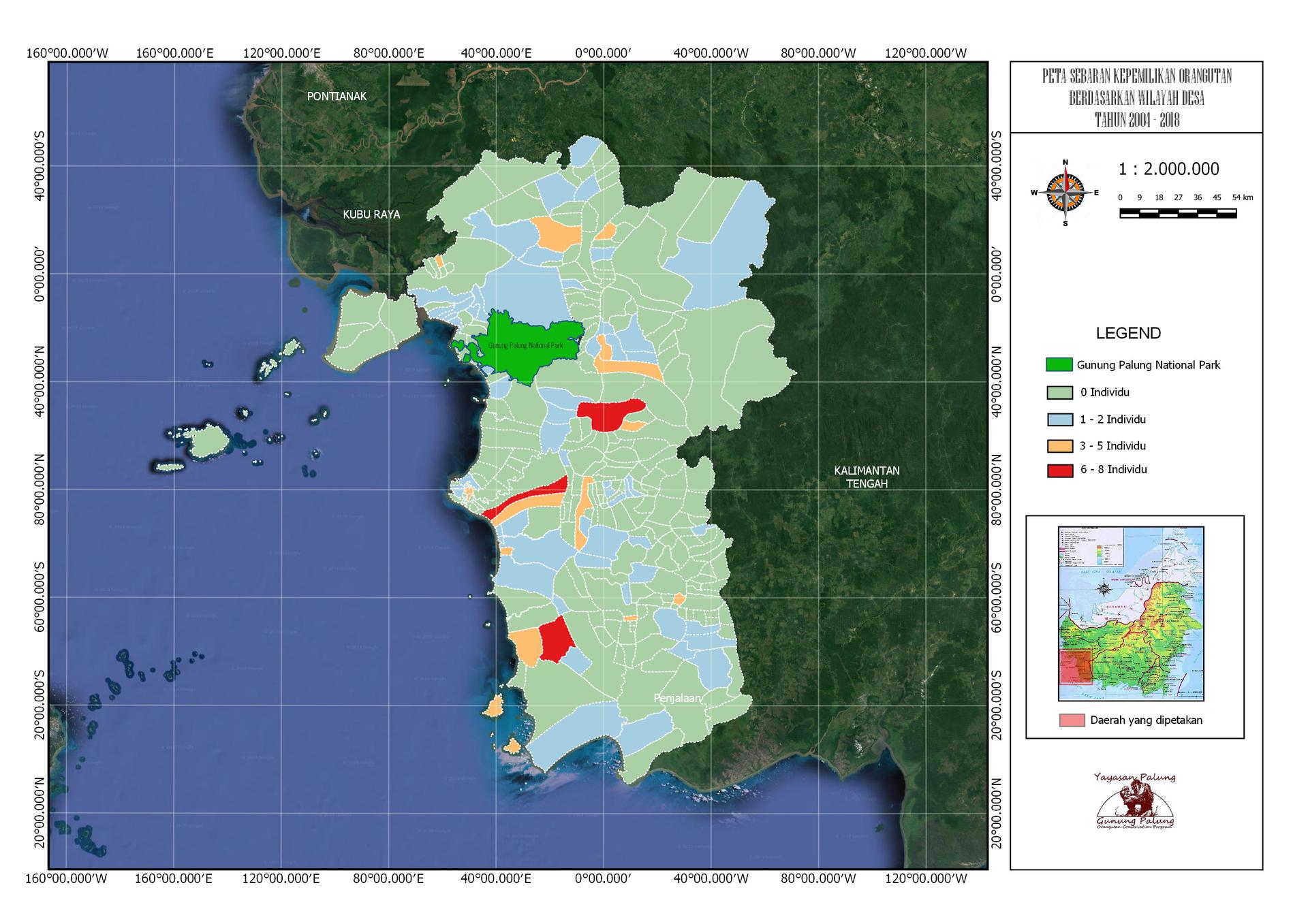
“Map of the distribution of orangutan ownership by village area, 2004-2018”
Light blue denotes villages with 1-2 cases; orange: 2-5 cases; red: 6-8 cases.

Cases of Human-Orangutan Conflict in Kayong Utara and Ketapang Regencies 2015-2019
Blue: 1-2 cases, orange: 3-5 cases, red: >5 cases.
